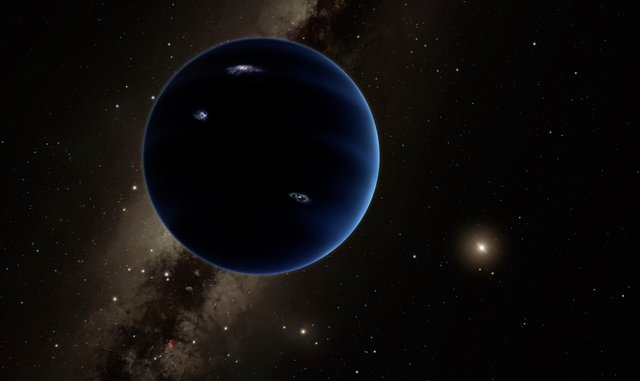From nine, to eight, to the Number Nine again - How we found a new planet
Did we find new planet? A real one, not Pluto.Source: nasa.gov
A generous part of being rational beings (well, at least when we try), includes that happy payload that is the need of not being alone. And I'm not talking about you, that just left a relationship to engage into a new one, I refer to that constant search we perform of: another one.
In this search that sometimes means looking for another "one" to another "us", and sometimes mixes both searches. Because, if a planet full of things we yet don't fully understand, holding things we still haven't discovered is just not enough for us, we've to look for a new one; imagine how sad it'd be to exist without giving ourselves new horizons. Forget it, we are made to always try to go a step further. That's why since Galileo's telescope until today we are attempting to see further than those sparking lights in the sky, sometimes even further than our nearby neighbors, broadening our search, finding out that outside of this "hood" there's plenty of planets to look at.

The hard part off all this is that, as we distance our beloved Earth, the harder it is for us to "see" things, especially if it's objects that do not possess their own luminescence, but they reflect others'; because that reflection is usually "blocked" by other objects. This, happens to planets, asteroids and the rest of rocky objects in the universe; just like Us, that had that schoolmate that monopolized the best roles at the school acts. Yes, it's been 25 years and I still haven't forgot you, Mary.
Now, It turns out that es invisible to the (naked) eyes, and that's why the Astronomy Elite developed tools to find things without needing to see them. The branch of Astronomy that does this is called Celestial Mechanics (CM). The CM takes into consideration the gravitational interaction, relations and the effects among celestial objects; thanks to that we can study, amid other things, their movements, orbits and all other parameters that characterize them; like periods, size and tilt... With all the possible variations... (and the list goes on)
This is how, for example, we can predict where a certain object will be taking into considerations where is it at now, where it was and how its movement affects the objects that surround it. Neptune is a famous case, that was discovered thanks to the fact that Uranus (easy joke here) was never at the place where he was supposed to be at (I'm sorry, I had to do it!), that lead the Astronomers to believe that there had to be another planet perturbing its orbit and shifting its position. Thanks to this theory, they aim their telescopes, looking for it; in a race that had "who can find it first?" as topic. Effectively there it was, screwing up all the school books on Earth, remaking the pages that talked about the solar system.

With this exact same system of inference the existence of a new planet called "Planet Nine", thanks to the orbital parameters read.
To talk about Planet Nine, we need to clarify first the solar system does not end at Pluto, it extends way further than that, including: "everything the light touches is our kingdom, Simba". And when I mention "light" I'm being poetic, referring to everything that is influenced by the Sun's gravitational field, an estimated distance of one light year away from the Earth's closest star: our fellow Ra.
Out there, in a space far away... There's this region known as Trans-Neptunian Space (Something as far as the Gym for the average compulsive professional dessert-taster), there's a BUNCH (here's my word again!) of objects linked to the Sun by gravity in there, like comets, and other celestial objects that enter the category of Dwarf Planets, like Pluto, but VERY far. In 2003 Sedna had her 15 minutes of fame, with an elliptic orbit that is highly eccentric (very, VERY elliptic), with a 506.2AU semi-major axis (1AU equals the distance between the Sun and Earth), while when she's at her closest point to the Sun she strolls (this is a reference to the meaning of "planet"; πλανῆται, planetai, "wandering") at 76AU, this is 76 times further than us.

Obviously, every time a new candidate appears for this category, the press displays it as a novelty, because more planets makes us feel less lonely. But, the truth is, that the Trans-Neptunian space is hoarded with dwarf planets. This is why the Planet nine had a particular "trend" at the social media. Phattie (as it is nicknamed by friends for the following reason), is no dwarf: It has a size similar to Neptune's (a bit smaller and absolutely less gaseous).
The trick in all this is the "conditional" fact of this whole article, because, there's enough evidence to be "almost" sure it exists, but we still haven't verified it!. The direct observation of the planet with telescopes is hard, because it is very distant from the sun (around 200AU away); but we still have faith (lets call it confidence), in the Large Synoptic Survey Telescope that should start working around the year 2019.
Meanwhile, we only have left to keep observing the area and analyzing objects with similar orbital characteristics that could give us better hints about "where" to find Phattie at.
Perhaps, we may be able to spot him and finally scream "Eureka!" Or not.

If you liked this post and its informal way of talking about sciences, please, follow me for more!
Leave a comment either for good or for bad reviews. I take everything as constructive, and I really appreciate the feedback, even from trolls (at least a troll read it before being himself!).
Copyrights:
All the previously used images are of my authory or under a CC0 license (Source: pixabay), unless openly stated.
All the Images created by me possess a WTFPL licencing and they are free to redistribute, share, copy, paste, modify, sell, crop, paste, clone in whatever way you want.

There is this star which they say it might be the partner of our sun if we consider it being a binary star system and they call it "nemesis" and saying every 70 million years it orbits our sun and the reason for last extinction event might be it passing near sun and disrupting asteroid belt causing a few of them to come our way.
Another one says solar system orbiting the galaxy actually goes above the disk and below it a movement like wave and when in those areas the electromagnetic shield of the milky way galaxy is at it's weakest state and we get bombarded by asteroids and lethal cosmic rays, but now we are I think nothing to be worried about.
There are more celestial bodies out there than anyone can ever imagine.
This is obviously a joke, such an object would be visible to the naked eye... and we'd have a VERY elliptic orbit.
Knowing that there's people that take this kind of jokes as facts obviously justify other people to me : the ones that believes that a bearded , bored guy, drown his creations(and ego bloating slaves) because they don do what he wants them to do.
I read about this in Discover magazine
Interesting, did not know of this one. Is this the hypothesized "Planet X" that people had talked about for a good many years?
Yup, that's it...
Yet I think that that name is used for the "Nibiru" tinfoil hat theory.
I hope we can eventually spot it.
I can recommend visiting the planetarium of the academy of science in san francisco where tgey discuss it a lot! Fr those around that city of course ;)